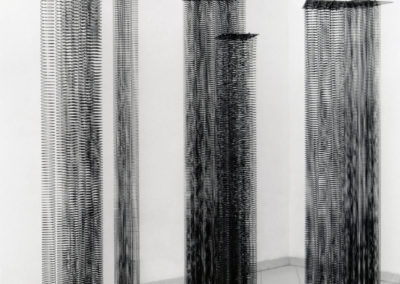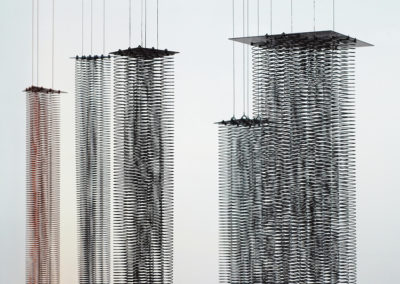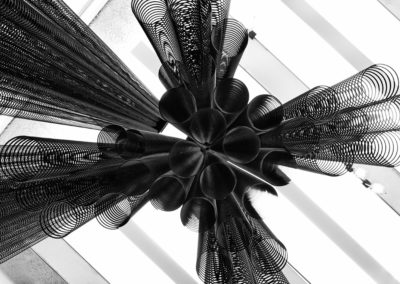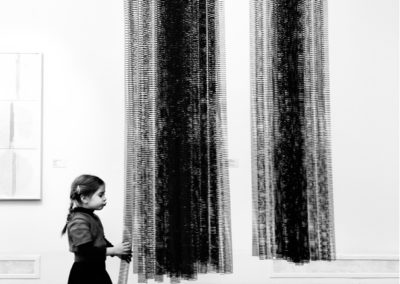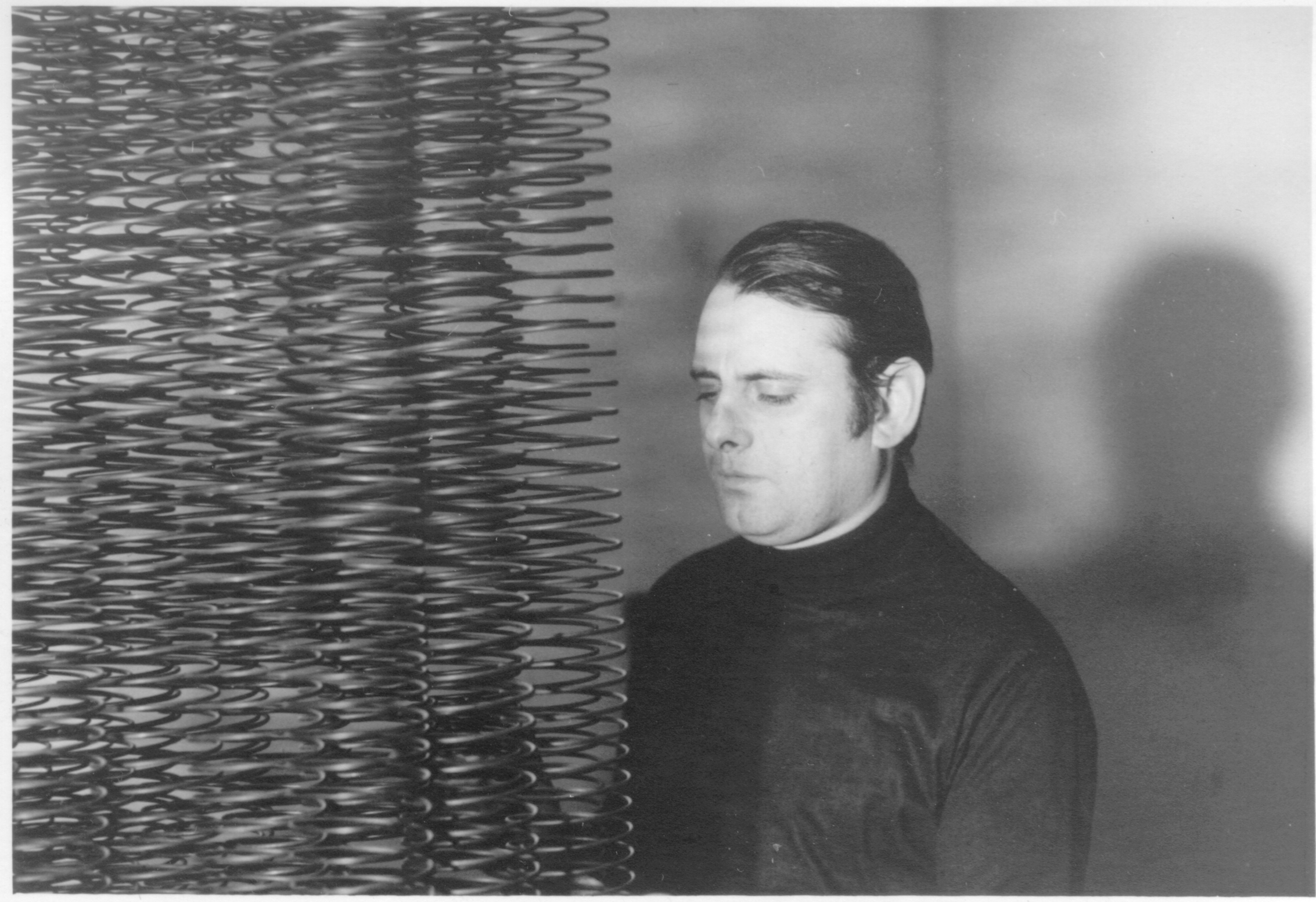FLEXIMOPHONE (1967)
This creation (also entitled Scultura sonante, sonorant sculpture) uses resonance to produce sound. It consists of springs fixed to a metal sheet hung from the ceiling which provides support and also acts as a diffuser or sound box.
The springs are made in spring steel and arranged in a systematic pattern. Consequently, the piece creates a dual acoustic and visual effect. Indeed, Fogliati said that he had chosen springs because he had begun to take into account, in his sculpture, «the fact that physically it had to be light».
So with the Fleximofono he successfully satisfied both the acoustic and the visual elements. When the Fleximofono is still, the observer sees the visual effect of the light penetrating through the superimposed springs.
The catalogue to the solo exhibition at the Martano gallery in Turin in February 1972 says that «the fleximofono is a complex mechanical resonator made from springs in sonorous harmony. When the surrounding noise interests the device, it emits white sound».
This type of sound output can also be obtained if the observer shakes one or more springs and triggers a response from the others: the sound of each individual spring is multiplied by the overall number of the springs.
Moreover, the size of the sound elements is proportionate to the intensity of the sound result one wishes to obtain; when multiple Fleximofoni of different sizes and consequently different tones are used, the extensive tone colour possibilities create the effect of a concert.

